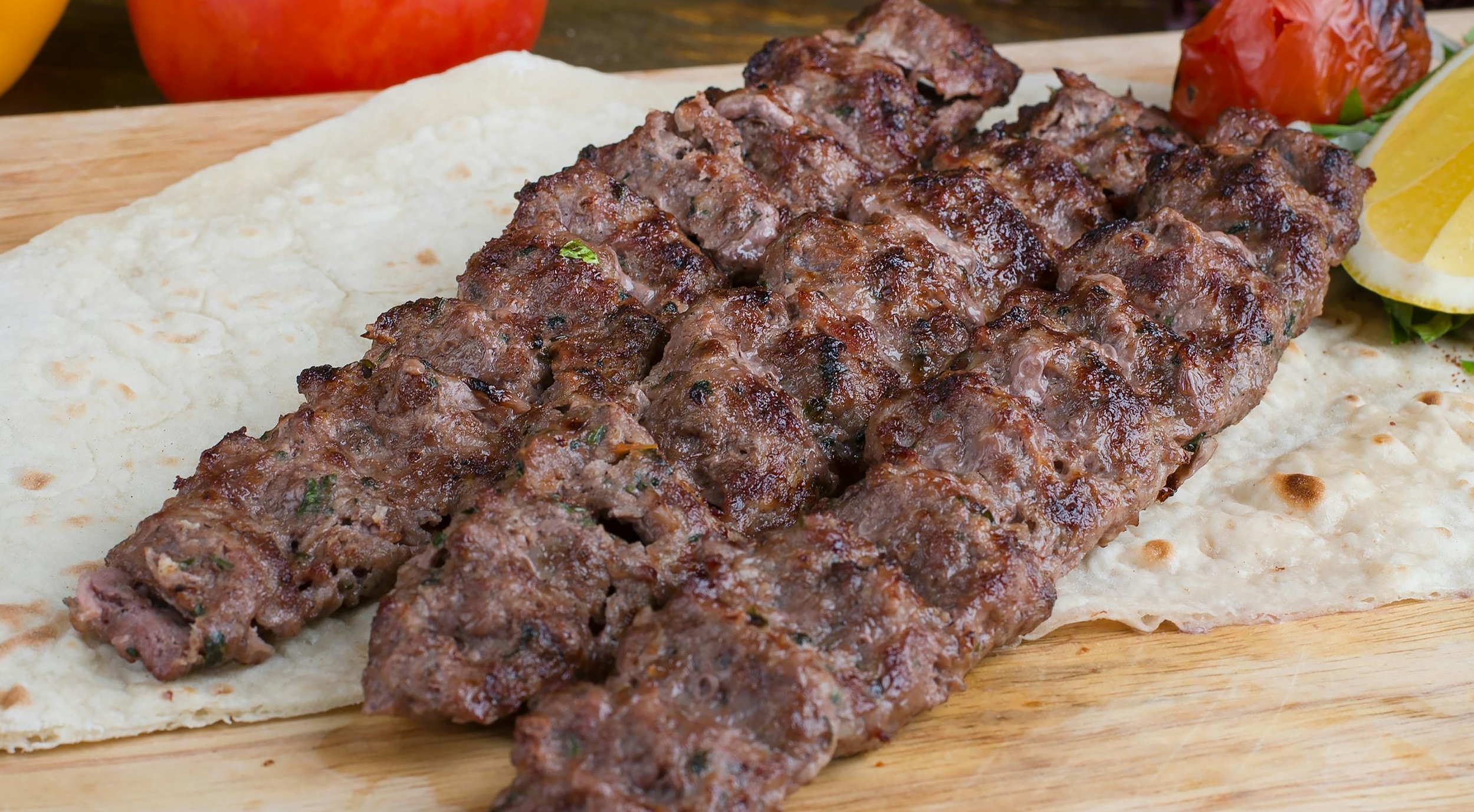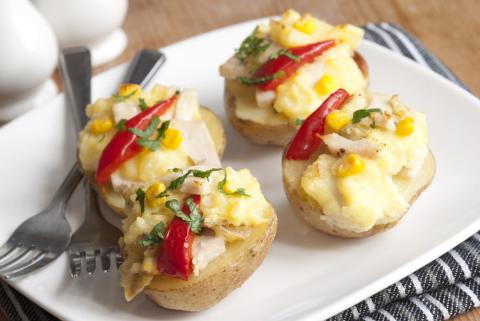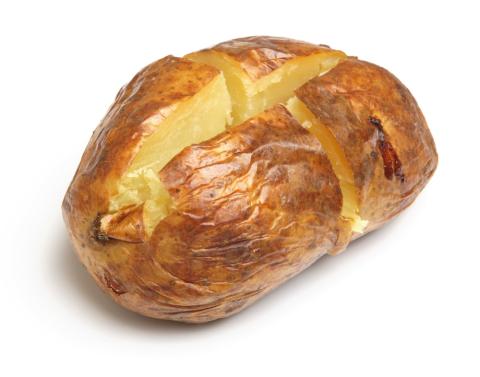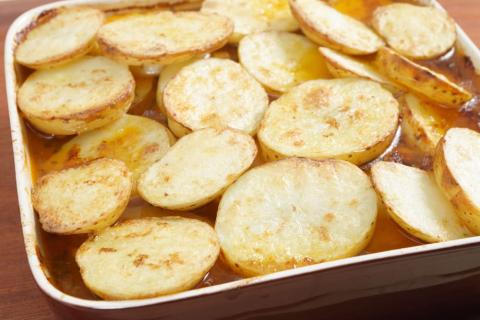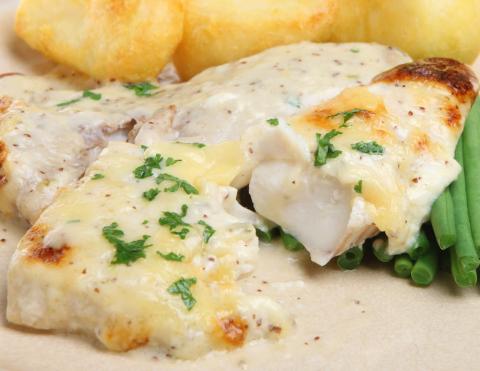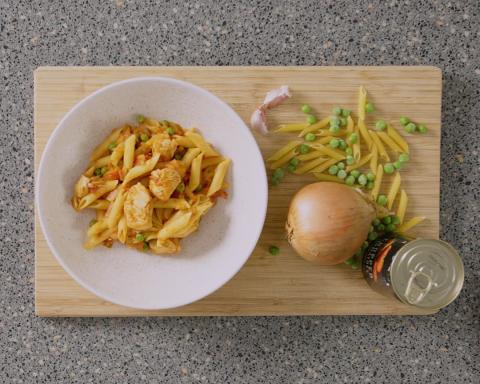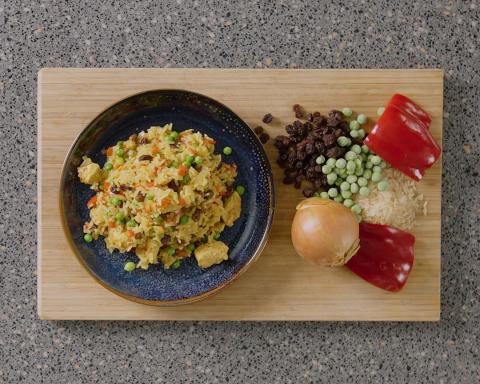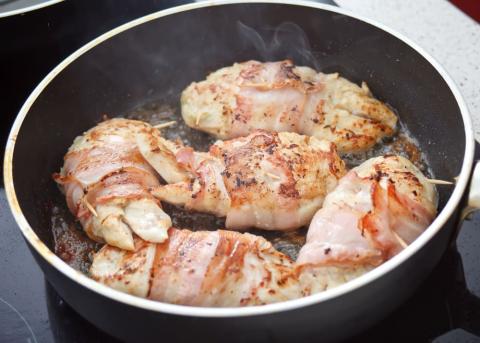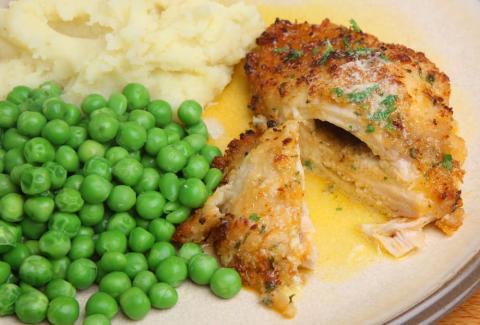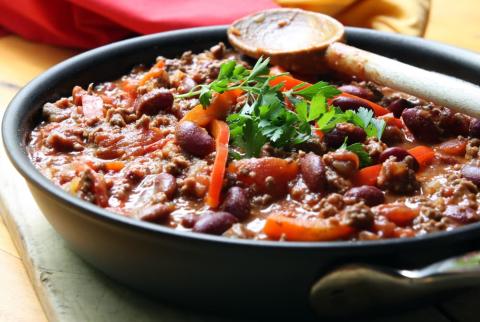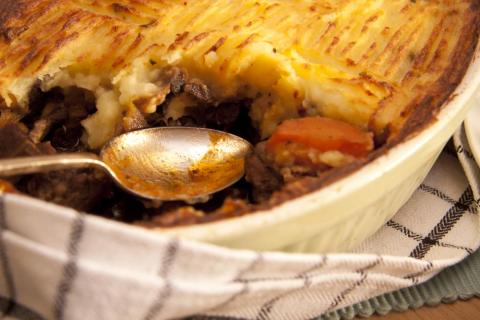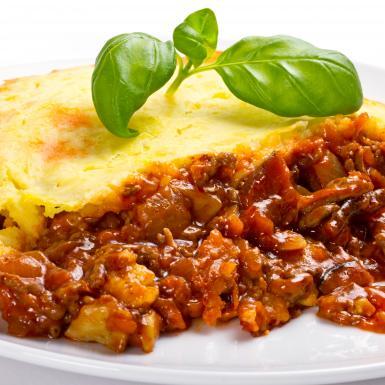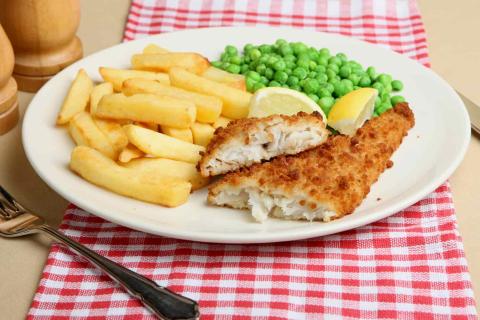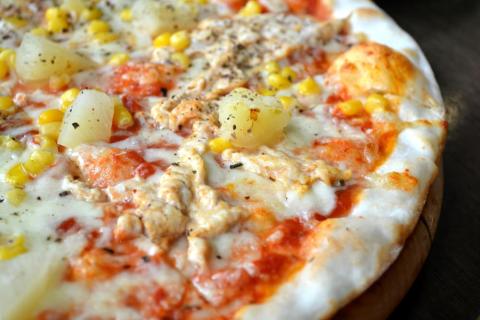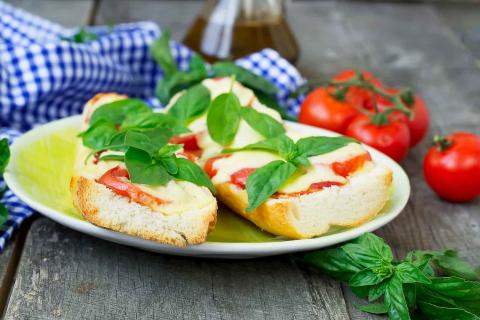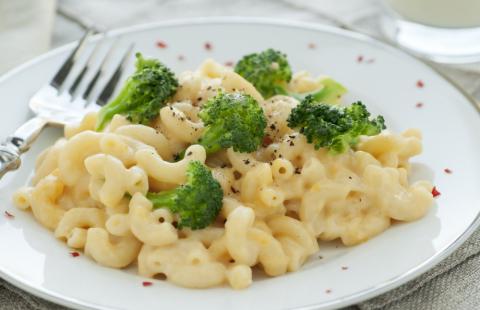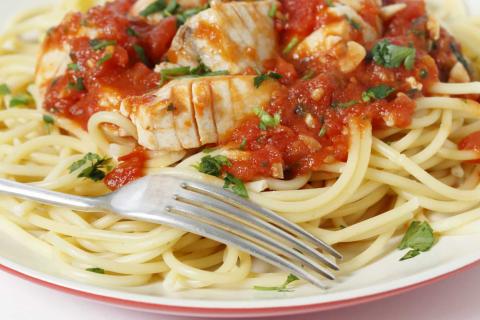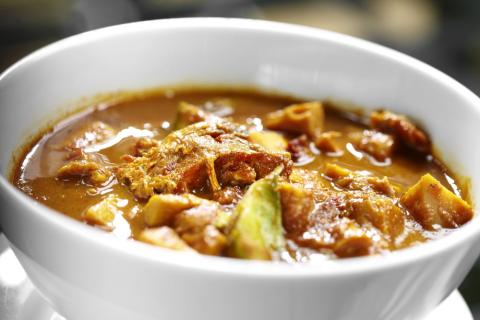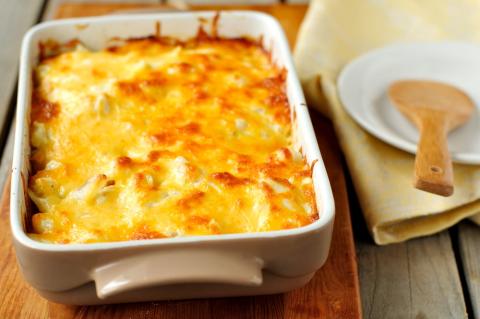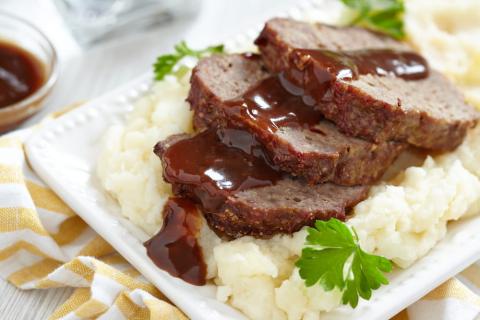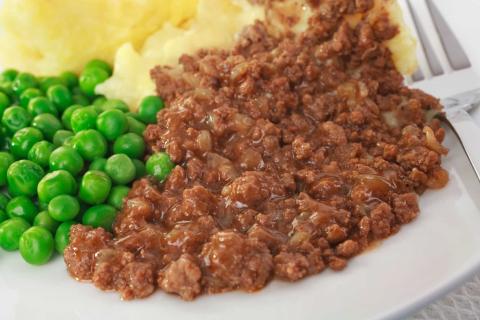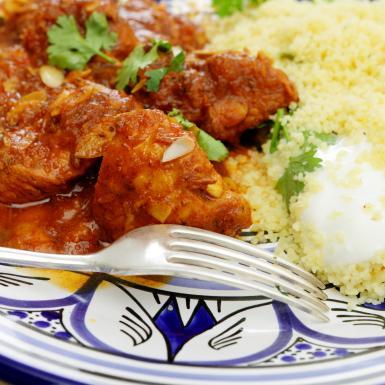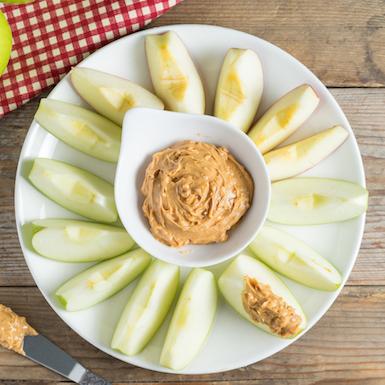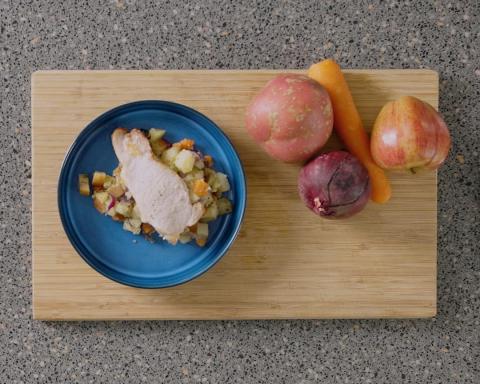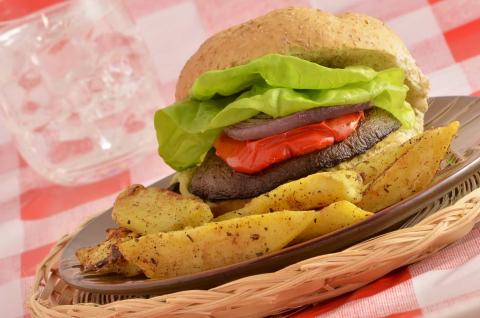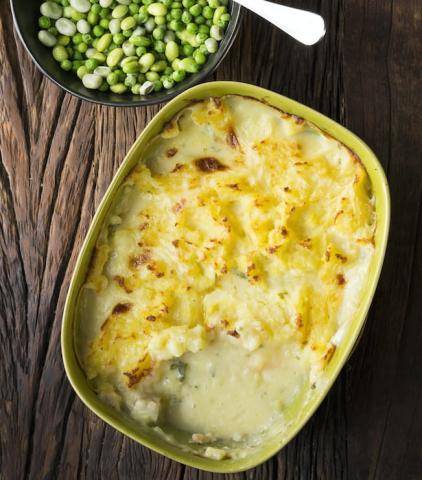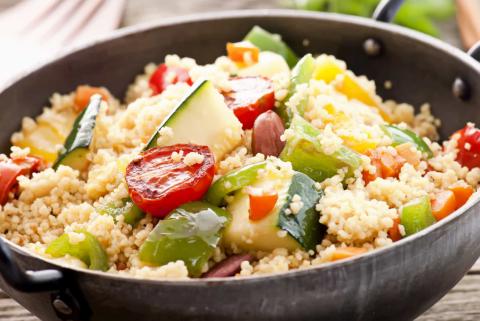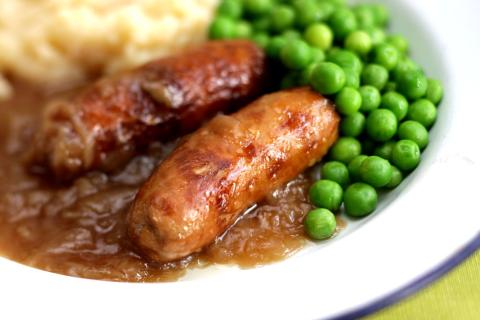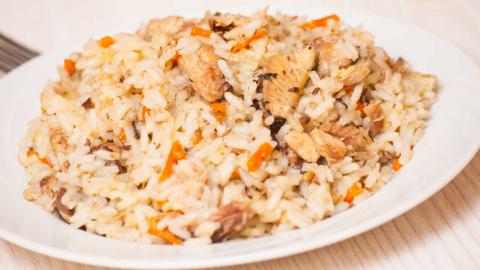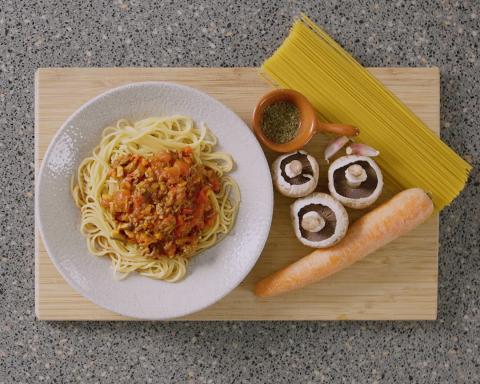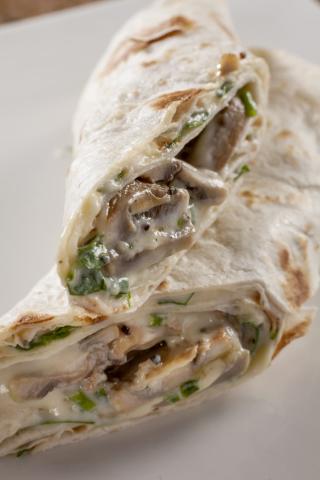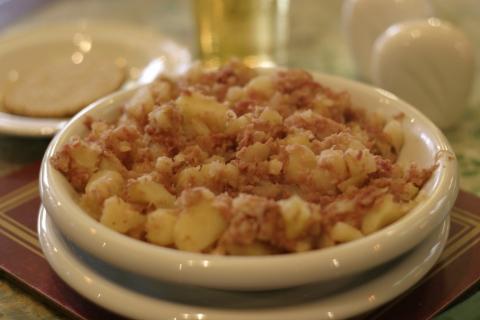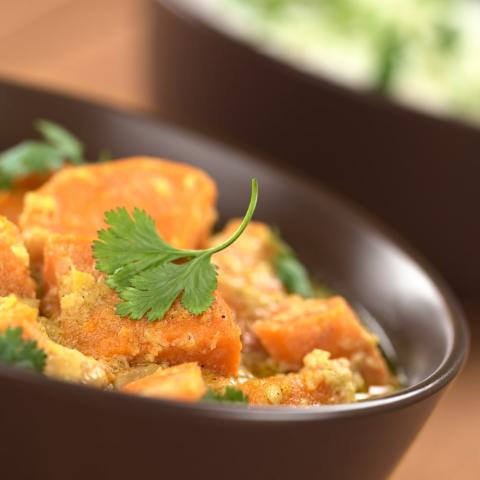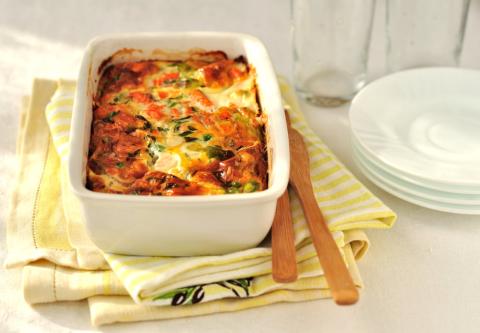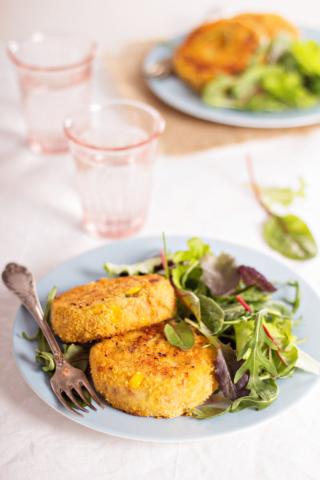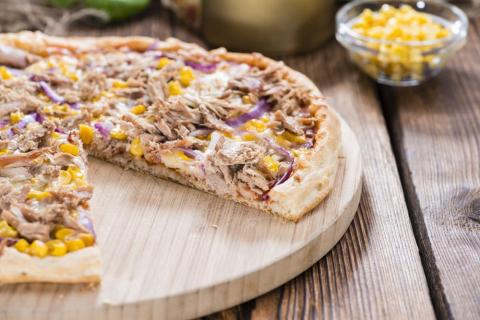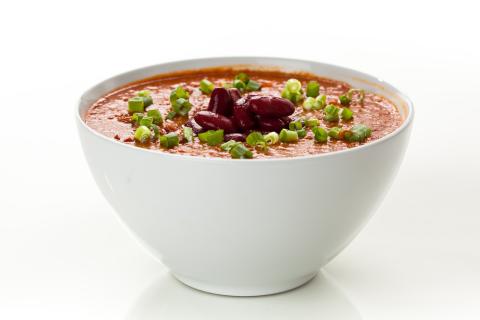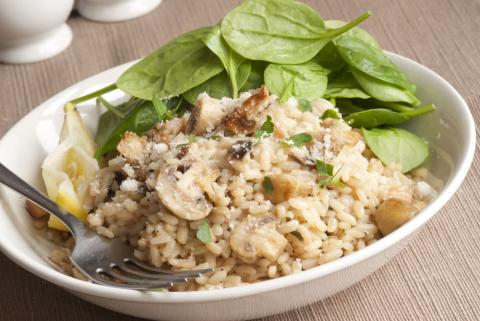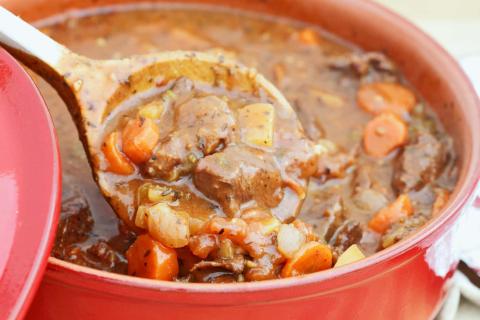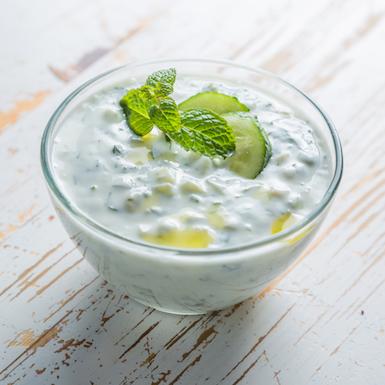- 1 Pack (400g) Minced Lamb
- 1 (150g) Onion
- 1 Tablespoon (10g) Vegetable Oil
- 1 Can (400g) Chickpeas
- 1 Teaspoon (5g) Curry Paste
- 4 large, wholemeal (340g) Pitta Breads
- 2 (170g) Tomatoes
- 12 Slices (72g) Cucumber
- 8 Leaves (40g) Lettuce
- 4 Tablespoons (160g) Low Fat Natural Yoghurt
Ingredients
Allergy Disclaimer
Always check the label of each ingredient for allergy warnings.
Method
- Peel and finely chop the onion.
- Heat the oil in a large saucepan and fry the onion for 5 minutes until lightly browned, then stir in the curry paste.
- Start heating the grill so that it is hot when required.
- Drain the chickpeas, then crush them with a fork or a potato masher.
- Mix the onion, lamb and chickpeas together.
- Shape the mix into 8 sausage shapes.
- Grill for 8-10 minutes, turning them once.
- Meanwhile, wash and slice the tomatoes and cucumber, and wash and shred the lettuce.
- Toast the pitta breads then carefully slit each one open with a knife to make a pocket.
- Enjoy the kofte kebab hot, in the pitta bread, with salad and a spoonful of yoghurt.
Time Saver Tips
Why not try making this in bulk so you could keep some to have another day? Let it cool down then just pop it in the fridge or freezer.
Cost Saver Tips
You could even try serving this with rice if you’ve got that in. Or you could shape it into meatballs and cook in a tomato sauce and serve it with spaghetti. How about using different types of mince, such as turkey, or lean pork mince? Look for whatever’s on offer and you could keep it in the freezer so it’s handy to use later.
Tips for Kids
You could use their favourite salad in this. Things like cherry tomatoes or carrot sticks are easy for your little one to chomp on. For a milder curry, why not give korma paste a go instead of madras or jalfrezi?
Nutritional Information
Based on a single serving of 373g (% of an adult's reference intake)
Energy
533 kcals ( 27 %)
2,236 kJ ( 27 %)
Fat
7.2 g ( 36 %)
Saturates
50.3 g ( %)
Sugar
9 g ( 10 %)
Salt
1.7 g ( 29 %)
Detailed nutritional information
| Per 100g | Per 373g serving | |
|---|---|---|
| Energy Kcals | 142 | 533 |
| Energy Kj | 598 | 2,236 |
| Protein | 9.2 g | 34.5 g |
| Total Fat | g | g |
| Saturated Fat | 1.9 g | 7.2 g |
| Carbohydrates | 13.4 g | 50.3 g |
| Total Sugars | 2.4 g | 9 g |
| NSP Fibre | 2.6 g | 9.9 g |
| Sodium | 183 mg | 684 mg |
| Salt | 0.5 g | 1.7 g |
Find out about nutritional labelling
Nutrition labels on the front of packaging
- Most of the big supermarkets and many food manufacturers display nutritional information on the front of pre-packed food.
- Front of pack nutrition labels provide information on the number of grams of fat, saturated fat, sugars and salt and the amount of energy (in kJ and kcal) in a serving or portion of a recipe.
- The labels also include information about reference intakes (expressed as a percentage) which are guidelines about the approximate amount of particular nutrients and energy required for a healthy diet.
- The colour coding tells you at a glance if the food has high (red), medium (amber) or low (green) amounts of fat, saturated fat, sugars and salt.
- The more greens on the label, the healthier the choice
- Amber means neither high nor low, so you can eat foods with all or mostly ambers on the label most of the time.
- Reds on the label means the food is high in that nutrient and these are the foods we should cut down on. Try to eat these foods less often and in small amounts.
Food shopping tips
If you’re trying to decide which product to choose, check to see if there's a nutrition label on the front of the pack. This will help you to quickly assess how your choices stack up. You will often find a mixture of red, amber and green colour coding for the nutrients. So when you're choosing between similar products, try to go for more greens and ambers and fewer reds if you want to make a healthier choice.
 Activities & Play
Activities & Play Behaviour
Behaviour Childcare
Childcare Development & Growing Up
Development & Growing Up Family, Friends & Relationships
Family, Friends & Relationships Feeding Your Baby
Feeding Your Baby Food & Eating
Food & Eating Health & Safety
Health & Safety Mental Health & Wellbeing
Mental Health & Wellbeing Money & Work
Money & Work Online Behaviour & Safety
Online Behaviour & Safety Pregnancy & First Days
Pregnancy & First Days School & Education
School & Education Sleep
Sleep

